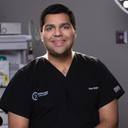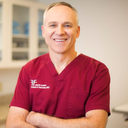Posted underFacelift q&a
Is There a Specialist Who Can Correct Visible Salivary Glands Post Facelift?
Im 5 mos post facelift, and very distressed about the visible glands under my chin/jaw. My neck is slender, making the glands even more conspicuous. People regularly ask about my health, pointing out my "swollen" glands. I was not advised about this issue untill I pointed at them and asked (POST SURGERY)! Is there a specialist ANYWHERE who can remedy this? Please! I look deformed. Can a facelift be reversed? I will travel to any country if necessary. Thank you!
Answers (12)
From board-certified doctors and trusted medical professionals
More Facelift Questions
See all Facelift Q&AWE SEND PRETTY
EMAILS
What’s trending? Who’s turning heads? Which TikTok myths need busting? We’ve got you. No fluff, no gatekeeping—just real talk. Get our free, unfiltered newsletter.



